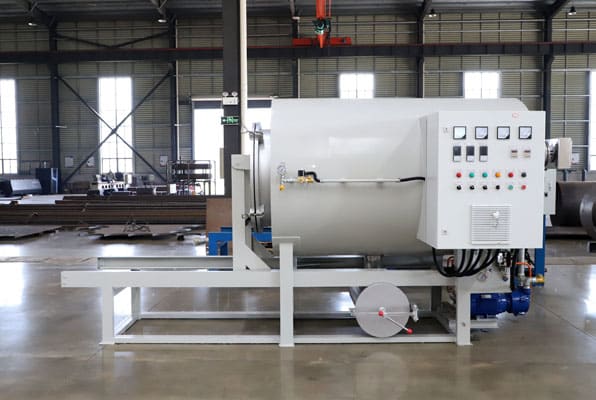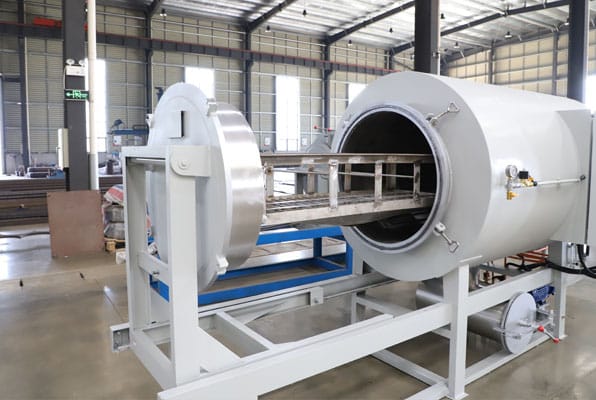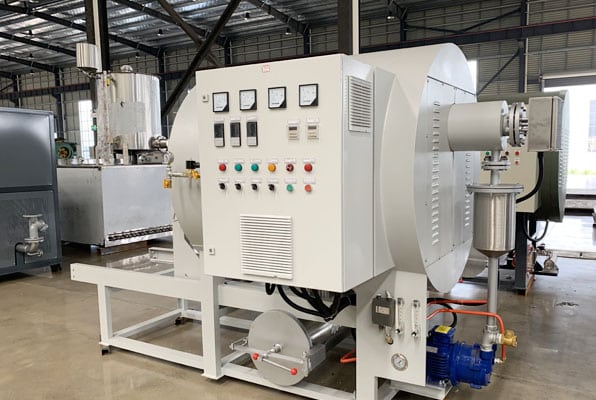In the processing industries for plastics, chemical fibers, and rubber, cleaning production equipment parts is a common headache. Key components like spinnerets, molds, screws, and filter screens get stubbornly coated with polymer residue (like carbonized coke) after use. Traditional methods, such as firing or solvent cleaning, are often inefficient, ineffective, environmentally harmful, and can damage precision parts.Is there a cleaning solution that is efficient, eco-friendly, and extends part life? Yes. The vacuum cleaning oven https://8ruiyan.com/en/all-vacuum-cleaning-furnaces/ is the modern industrial tool designed for this very purpose.
1. What the Vacuum Cleaning Oven Cleans
The vacuum cleaning oven has a specialty: removing organic polymer residue. Its main applications include:
- Chemical Fiber Industry: Spinnerets, melt filters, metering pumps, and component housings. This is its most common use.
- Plastics Extrusion & Injection Molding: Extruder screws, machine heads, molds, static mixers, and filter screens.
- Rubber Industry: Various extrusion dies and flow channel plates.
- Other Areas: Any precision metal part needing removal of carbonized or cured polymer residue.
Simply put, if the contaminant is organic and can be “burned” away, this oven is the best choice.
2. Key Components of the Vacuum Cleaning Oven
A typical vacuum cleaning oven works like a precise “high-temperature sauna.” It mainly consists of:
Control System: Modern ovens often use PLC or computer controls. Operators set the program, and the oven runs the entire cleaning cycle automatically. This is safe and convenient.
Furnace System: The core heating chamber. It is made of high-quality stainless steel. It contains heating elements and insulation for even, efficient heat.
Vacuum System: Includes a vacuum pump, valves, and gauge. It removes air from the furnace before heating. This creates an oxygen-free environment, preventing oxidation.
Heating & Temperature Control: Uses precise electric heating elements and smart controllers. It accurately manages temperature curves for a stable, reliable process.



3. The Core Cleaning Process: Three Stages to Renew Parts
The magic lies in a scientific three-stage cleaning cycle. It acts like a deep “detox spa” for parts.
Stage 1: Heating and Melting
- Goal: Soften and melt the polymer. This makes it change from solid to liquid. It then drips off the part surface.
- Process:
- Load parts into the oven and close the door.
- Start the vacuum pump to create a low-oxygen environment.
- Begin programmed heating, usually to 300°C – 400°C (depending on the polymer).
- At this temperature, most polymers melt and fall into a collection tray at the bottom.
Stage 2: Vacuum Pyrolysis (High-Temperature Carbonization)
- Goal: Completely break down any stubborn, carbonized residue left from Stage 1.
- Process:
- Raise the temperature further, typically to 450°C – 550°C. Hold this temperature.
- Under continuous high heat and vacuum, the remaining polymer chains break down. They turn into small gas molecules (mostly hydrocarbons) and a little carbon ash. The vacuum pump removes these gases.
- This is the crucial stage. The vacuum ensures no oxygen is present. This prevents part oxidation and damage, preserving the metal’s original finish and properties.
Stage 3: Cooling and Oxidation (Optional)
- Goal: Remove any tiny remaining carbon specks and cool the parts.
- Process:
- Oxidation Treatment (Optional): After Stage 2, let in a small amount of filtered air or oxygen. The furnace is still hot. The oxygen reacts with the leftover carbon, creating carbon dioxide gas, which is pumped out. This ensures a “mirror-finish” clean.
- Cooling: Turn off the heat. Let the furnace cool down naturally until it’s safe to open (usually below 60°C).
- Once cool, release the vacuum, open the door, and remove the clean parts.
Conclusion
Vacuum cleaning ovens offer major advantages. They are efficient, eco-friendly, energy-saving, and safe (no open flames). They cause zero damage to precision parts. As a result, they have become essential in modern polymer processing.
They effectively restore hard-to-clean parts, ensure product quality, and extend mold life. This reduces harmful emissions and brings significant economic and environmental benefits to companies.
If polymer residue is a problem for you, investing in a vacuum cleaning oven is a smart step towards smarter, greener production.
For further consultation, please contact our technical team for expert advice.
Whatsapp:86-19106101570
wechat:86-19106101570
email:fob@jsryan.com
